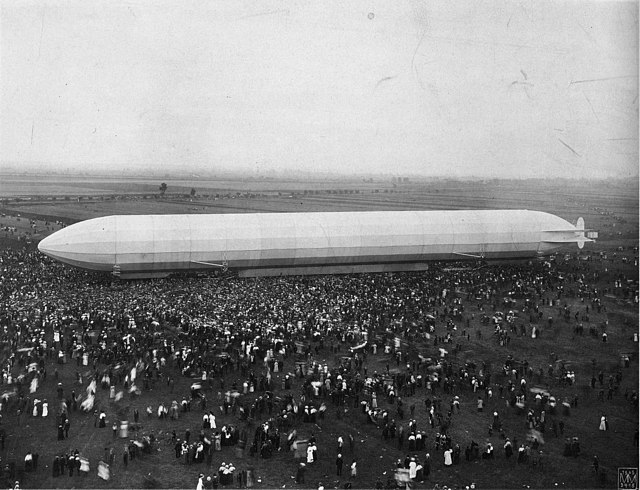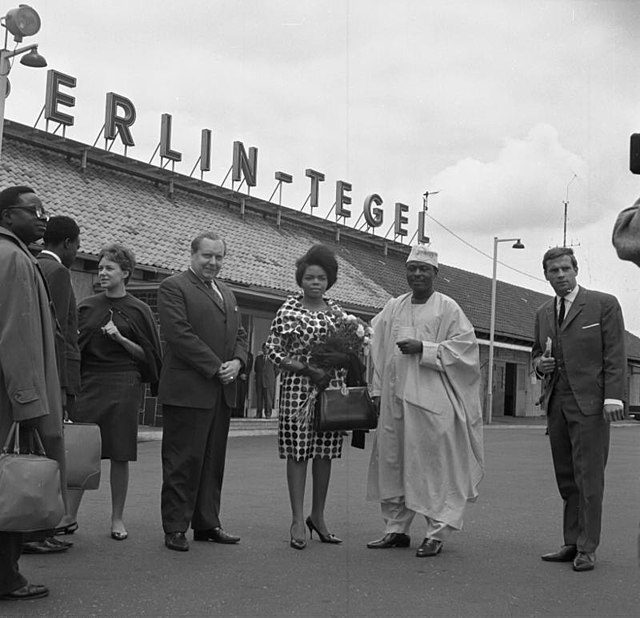Berlin Tegel "Otto Lilienthal" Airport was the former primary international airport of Berlin, the federal capital of Germany. The airport was named after aviation pioneer Otto Lilienthal and was the fourth busiest airport in Germany, with over 24 million passengers in 2019. In 2016, Tegel handled over 60% of all airline passenger traffic in Berlin. The airport served as a base for Eurowings, Ryanair as well as easyJet. It featured flights to several European metropolitan and leisure destinations as well as some intercontinental routes. It was situated in Tegel, a section of the northern borough of Reinickendorf, eight kilometres northwest of the city centre of Berlin. Tegel Airport was notable for its hexagonal main terminal building around an open square, which made walking distances as short as 30 m (100 ft) from the aircraft to the terminal exit.
The airport in September 2011
Zeppelin LZ 3 airship at Tegel in 1909
Arrival at Berlin Tegel of a former Nigerian information minister on an official visit to West Berlin on 20 June 1963 (note the original terminal on the airport's north side in the background).
Air France Sud-Aviation Caravelle landing at Berlin Tegel Airport in 1964
An IATA airport code, also known as an IATA location identifier, IATA station code, or simply a location identifier, is a three-letter geocode designating many airports and metropolitan areas around the world, defined by the International Air Transport Association (IATA). The characters prominently displayed on baggage tags attached at airport check-in desks are an example of a way these codes are used.
A baggage tag for a flight heading to Oral Ak Zhol Airport, whose IATA airport code is "URA"





